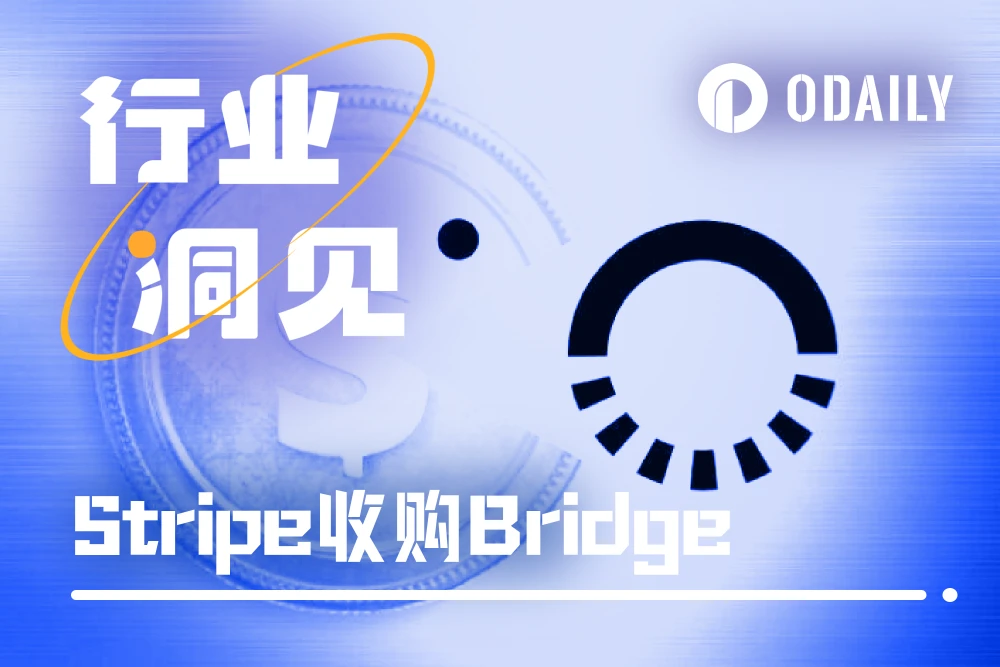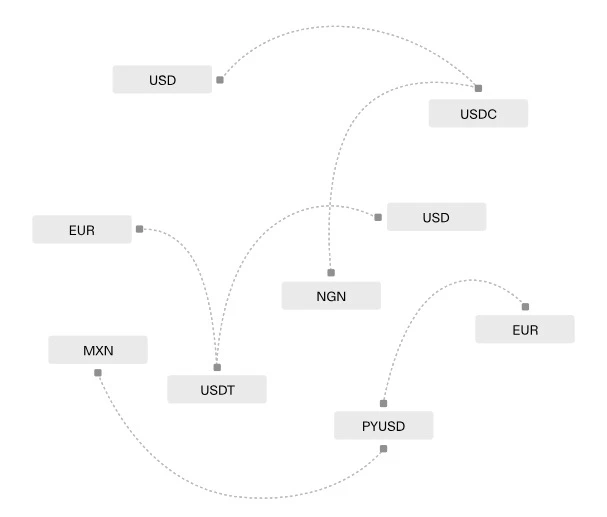Original | Odaily Planet Daily ( @OdailyChina )
Author | Fu Howe ( @vincent 31515173 )

In the global payment field, Stripe is a well-known name. Recently, the company announced the acquisition of Web3 payment platform Bridge for $1.1 billion, becoming the largest acquisition in the history of Web3 and attracting widespread attention. This is not only an important step for Stripe to expand its payment solutions, but also a landmark moment for Web3 technology to emerge in the traditional financial system.
Odaily Planet Daily will delve into the two parties involved in this acquisition and the motivations behind it.
Basic introduction to Stripe and Bridge
Founded in 2010 and headquartered in San Francisco, Stripe is a financial technology company focused on online payment solutions. Founded by brothers Patrick Collison and John Collison, Stripe is known for its easy-to-use API and powerful developer tools, and has quickly become the preferred payment processing platform for millions of merchants around the world.
Key products and services:
Payment processing: Stripe offers a variety of payment methods, including credit cards, debit cards, and digital wallets, helping merchants easily accept online payments.
Subscription Management: Stripe’s subscription management tools make it easy for SaaS companies and other businesses to process recurring payments.
Fraud Detection: Stripe Radar uses machine learning to monitor transactions in real time to identify and prevent fraud.
Global support: By supporting multiple currencies and local payment methods, Stripe helps merchants expand into international markets.
Developer-friendly: Stripe has detailed documentation and powerful APIs, which greatly reduces the technical threshold.
Stripe has not only won the trust of many startups and large companies (such as Amazon and Uber), but also reached a valuation of US$95 billion in 2021, becoming one of the most valuable startups in Silicon Valley.
Bridge is a stablecoin-based payment platform that challenges traditional payment systems such as SWIFT and credit cards by innovating global money flows. The core value of Bridge is that it allows developers to seamlessly convert between fiat currencies and stablecoins and flow between different blockchains.

Main functions and services:
Stablecoin API: Bridge focuses on providing developers with stablecoin-related APIs, enabling them to easily achieve seamless conversion between fiat currency and stablecoin.
Cross-border payments: Bridge provides cross-border payment and foreign currency exchange services, and users can use its Orchestration APIs to quickly transfer funds.
Fund Reserves: Bridge invests its reserve funds in U.S. Treasury bonds with an annual yield of more than 5%, thus ensuring the safety and stability of funds.
Compliance: Bridge is licensed in 48 states and holds a VASP license from Poland, ensuring it operates in compliance.
Fast and efficient: The entire funds transfer process usually takes only minutes and costs only a few cents, making it a strong competitor to traditional payment systems.
It is worth noting that on August 30 this year, Bridge announced that it had received $58 million in financing from Sequoia Capital, Ribbit Capital, Index Ventures, Haun Ventures, 1confirmation and BEDROCK. Only two months later, Stripe announced that it had acquired Bridge for $1.1 billion.
In addition, according to official news, since its launch 18 months ago, Bridge has processed more than US$5 billion in annual payment volume and cooperated with a number of fintech companies, including well-known companies such as Coinbase, Bitso and SpaceX.
Strengths combine, why Stripe acquired Bridge
Stablecoin payments, especially cross-border payments, are gradually developing in various countries and regions. I have previously interviewed Yuanbi Technology, one of the companies selected for the Hong Kong Stablecoin Sandbox. When talking about the role and future development of Hong Kongs Hong Kong dollar stablecoin, the companys CEO Rita emphasized the direction of stablecoin cross-border payments. For details, please see the article Exclusive Interview with Yuanbi Technology CEO Rita: How can Hong Kong dollar stablecoin shine in Web3?
Stablecoin payment solutions are one of the future trends. As a payment giant, Stripe acquired Bridge for the following reasons:
Expanding market share: The primary reason for Stripes acquisition of Bridge is to further expand its market share, especially in the field of Web3 and stablecoins. With the development of blockchain technology, more and more merchants and consumers are beginning to accept digital currencies. By acquiring Bridge, Stripe can quickly enter this emerging market and provide a more comprehensive payment solution.
Technology Integration and Innovation: Bridges technology foundation and innovation capabilities are well aligned with Stripes core business. By integrating Bridges stablecoin API and cross-border payment capabilities, Stripe can enhance its existing payment products and improve the speed and efficiency of transactions. This technology integration will not only enhance the user experience, but also provide more possibilities for future product innovation.
Competitive advantage: Competition in the fintech industry is becoming increasingly fierce. Stripe faces pressure from companies such as PayPal and Square, and also has to deal with emerging competitors in the Web3 field. The acquisition of Bridge will give Stripe a competitive advantage at the technical and market levels, especially in providing blockchain-based payment solutions.
Attract developers and businesses: Bridge is known for its developer-friendly API, which is highly consistent with Stripes strategic goals. By acquiring Bridge, Stripe can further attract developers and businesses and provide more abundant tools and resources to help them build and expand their businesses in the Web3 environment.
Strengthening compliance capabilities: Compliance of stablecoin payments is critical in the fintech industry. Bridge has obtained compliance licenses in multiple regions, which provides the necessary compliance foundation for Stripes global expansion. The acquisition of Bridge will enable Stripe to better respond to regulatory requirements in different countries and regions and reduce compliance risks.
This acquisition is not only a collaboration between Stripe and Bridge, but also a milestone for the entire Web3 industry. As traditional financial technology giants pay more attention to Web3 technology, more funds and resources will flow into this field to promote its development. In the future, Web3 may further integrate with traditional payment systems to create more innovative payment solutions.










